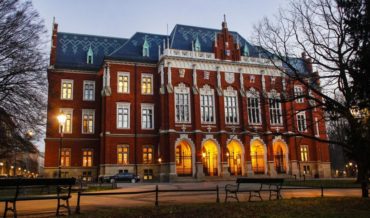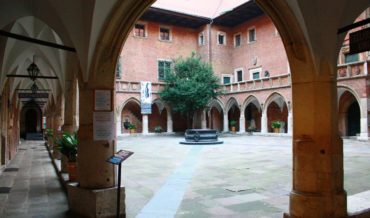Contents
Key Facts
- Born in 1842 in Przemyśl, died in 1907 in Kraków
- Pioneer of physical education in Poland and visionary social reformer
- Professor of gynecology and obstetrics at the Jagiellonian University from 1895
- Founder of Jordana Park in 1887, the first public playground in Poland
- Studied medicine in Vienna and Kraków, later practiced in New York
- Initiated the introduction of gymnastics lessons in schools and comprehensive school medical care
- Founded multiple progressive social organizations focused on child welfare and worker housing
Early Life and Formation in Galicia
Henryk Jordan was a distinguished physician, social activist, professor at the Jagiellonian University, and the pioneering architect of modern physical education in Poland. Born in 1842 in Przemyśl, in the heart of Galicia under the Austrian partition, Jordan grew up during a complex yet paradoxically reform-friendly period compared to other partitioned territories. His family, acutely aware of education’s importance in times when Poland existed only in hearts and minds, instilled in him values of public service and social responsibility.
Growing up in this culturally diverse, multinational environment where Polish, Austrian, Jewish, and Ukrainian influences intersected, Jordan was exposed to progressive Habsburg administrative practices and the emerging concepts of public health and social welfare. This multicultural milieu of southeastern Poland, where new ideas flourished at the crossroads of civilizations, evidently shaped his pioneering approach to integrative medicine and comprehensive social reform that would later distinguish him from his contemporaries.
Jordan pursued his medical education with extraordinary dedication, studying medicine in Vienna and Kraków. The Vienna Medical School, representing the European vanguard of medicine at the time—particularly in aseptic surgery, public hygiene, and preventive medicine following devastating cholera epidemics—provided Jordan with access to revolutionary techniques and progressive thinking about the interconnection between individual health and social conditions.
International Experience and Medical Expertise
After completing his foundational medical training, Jordan embarked on a transformative two-year sojourn to New York during the 1870s, a period when American medicine was rapidly modernizing and incorporating European advances. This experience proved pivotal for his intellectual development, as he encountered innovative medical practices and progressive social reform movements that were emerging in the rapidly industrializing United States. The American experience, particularly exposure to emerging concepts of preventive medicine and community health initiatives, fundamentally broadened his understanding of medicine as a social science rather than merely clinical practice.
Upon returning to Kraków, Jordan obtained his doctorate in medicine and systematically built what would become a distinguished academic career. From 1895, he served as professor of gynecology and obstetrics at the Faculty of Medicine of the Jagiellonian University, one of Central Europe’s most prestigious medical institutions. His appointment to this influential position reflected not only his clinical expertise and research contributions but also his growing reputation as an innovative educator who understood medicine’s broader social implications.
The Revolutionary Vision of Jordana Park
Jordan’s most visible and enduring contribution to Kraków materialized in 1887, when he established a public garden known today as Jordana Park,a groundbreaking initiative that represented the first organized public playground in Poland and one of the earliest examples of scientifically planned recreational facilities for children in Central Europe.
The park was equipped with specially designed apparatus including climbing frames, swings, sandboxes, obstacle courses, and designated areas for organized games, enabling comprehensive physical development for children of all social classes. This introduced the revolutionary concept that supervised and systematically organized play and physical activity were not merely entertainment, but crucial components of healthy psychomotor and social development—an approach that was remarkably innovative in urban planning of that era.
The initiative initially encountered skepticism from conservative circles who questioned the necessity of ‘organized recreation’ for children from lower social strata, but this resistance quickly dissipated as the evident health and educational benefits became undeniable. The park became an influential model that inspired similar initiatives throughout Poland and other parts of the Austro-Hungarian Empire, in many aspects anticipating similar playground concepts being developed in Germany and Britain, including the work of educational reformer Friedrich Fröbel.
Educational Innovation and Systematic Physical Education
Jordan’s commitment to physical education extended far beyond creating recreational spaces. He organized a comprehensive two-year physical education program at the Jagiellonian University, which was unprecedented for its scientific rigor and systematic approach. This curriculum trained teachers and medical professionals in exercise physiology, pedagogical principles of physical education, and the complex relationship between physical activity and cognitive development.
Perhaps his most far-reaching educational reform was systematically introducing gymnastics instruction in schools alongside the institution of school medical officers—a dual innovation that addressed both preventive and active aspects of child health. The introduction of qualified school physicians meant that developmental issues and health problems could be identified and addressed early, while mandatory gymnastics lessons ensured that all children, regardless of family economic circumstances, had access to structured physical development opportunities.
Comprehensive Social Achievements
Jordan’s contributions to society reflected his sophisticated understanding of the interconnected nature of social problems:
Military and Civic Development
- Organized Academic Legions and other paramilitary training units that prepared young men for potential military service while building discipline, physical fitness, and national identity consciousness during the partition period
- Coordinated educational excursions that combined cultural education with physical activity, helping youth develop appreciation for Polish heritage and natural environment
- Delivered historical lectures for children and youth, fostering patriotic awareness and historical consciousness during politically sensitive times
Economic and Housing Reform
- Promoted establishment of artisan workshops and agricultural plots, providing practical vocational training and food security for working-class families struggling with rapid industrialization
- Served as founder of the Society for Construction of Affordable Housing for Catholic Workers, addressing Kraków’s critical housing shortage as rural populations migrated to industrial centers
- Established the Association for Providing Warm Meals to Impoverished Children, ensuring nutritional security for disadvantaged youth
Cultural and Professional Leadership
- Served as president of the Music Society, promoting cultural development and artistic education as integral components of human development
- Published extensively in medical journals on hygiene, obstetrics, and public health, contributing significantly to contemporary medical knowledge and health awareness
- Advocated systematically for improved sanitation infrastructure and comprehensive public health measures throughout the city
Enduring Legacy and Historical Impact
Jordan’s influence extended far beyond his 1907 death, establishing institutional principles and social concepts that continued shaping Polish society throughout the 20th century and beyond. Professor Jan Dąbrowski, distinguished medical historian from the Jagiellonian University, frequently emphasized that ‘Jordan was a visionary whose work anticipated his era, laying foundations for modern public health concepts in Poland’.
The Jordana Park model was systematically replicated in numerous Polish cities, and his educational reforms fundamentally influenced physical education curriculum development throughout the region. His emphasis on preventive medicine and social determinants of health was remarkably prescient, recognizing that genuine health required comprehensive attention to housing conditions, nutrition, education, and recreational opportunities—concepts that wouldn’t become mainstream until decades later.
Jordan’s death in 1907 in Kraków marked the end of an extraordinary life, but his integrative vision of comprehensive child welfare and community health continues influencing contemporary approaches to public health and urban planning. Today, Jordana Park serves not only as a cherished recreational space for Kraków residents but as a living monument to the progressive vision of a man who understood that a healthy society required systematic investment in its most vulnerable and promising members—its children.
Bibliography and Sources
- Barycz, H. (1960). Jordan Henryk. In: Polish Biographical Dictionary. Vol. XI. Wrocław: Institute of History, Polish Academy of Sciences.
- Kozłowska, K. (2015). Pioneers of Physical Education in Poland: Henryk Jordan. Kraków: Jagiellonian University Press.
- State Archive in Kraków, Kraków City Records Collection, concerning Jordana Park establishment and administration.
- Digital Collections of the Jagiellonian Library, historical medical journals and Jordan’s publications.
- https://www.uj.edu.pl

